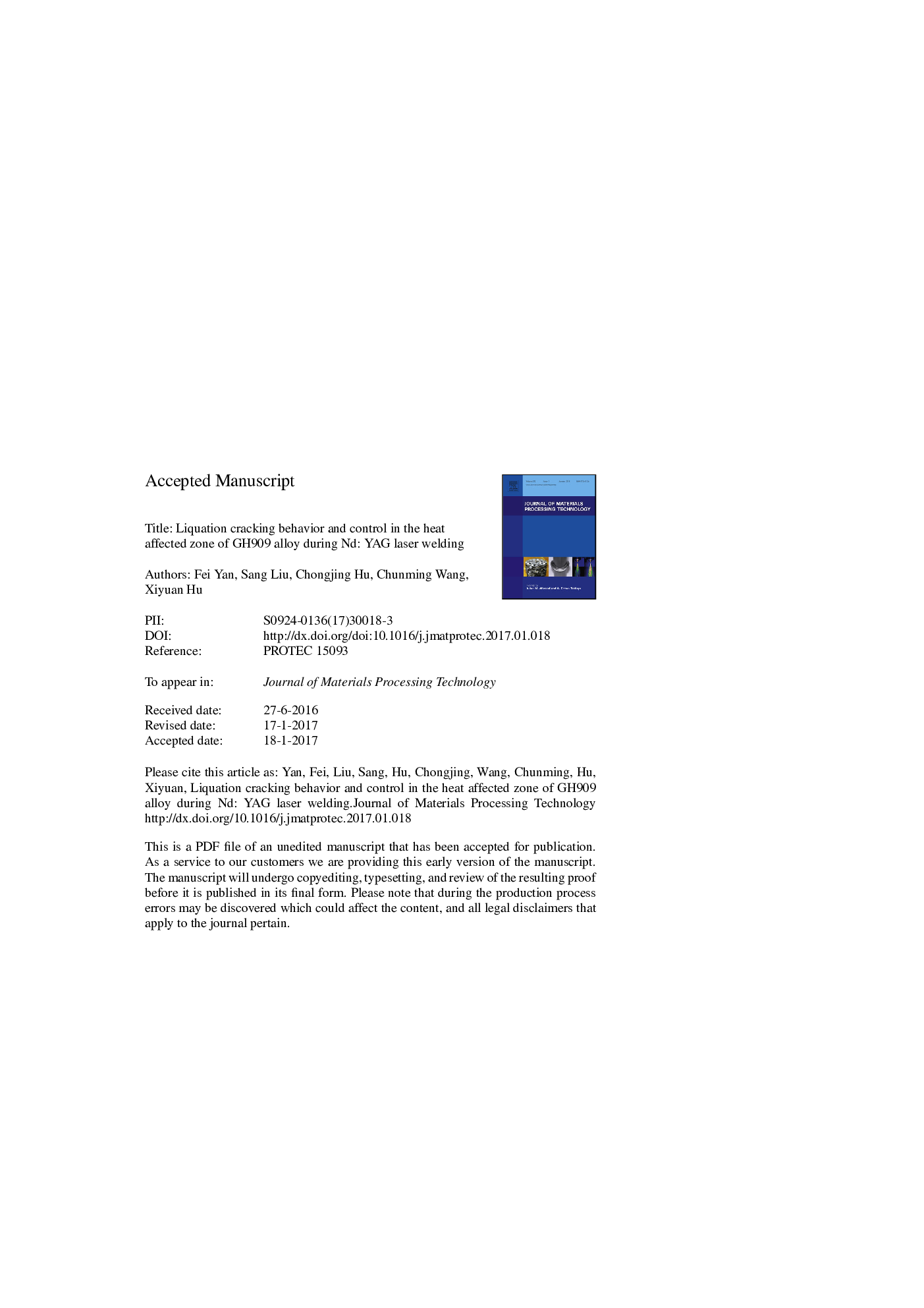| Article ID | Journal | Published Year | Pages | File Type |
|---|---|---|---|---|
| 5017876 | Journal of Materials Processing Technology | 2017 | 37 Pages |
Abstract
In this paper, we describe experimental laser welding of GH909 alloy. The forming mechanism of heat affected zone (HAZ) liquation cracking was investigated and improvements to the welding process are proposed. We determined that the occurrence of HAZ liquation cracking proceeds through three stages: intergranular liquation, crack initiation and crack growth. The presence of liquation cracking is associated with low melting eutectics and composition segregation that occurs at the grain boundaries. The segregation caused lattice distortion at the grain boundaries and inhibited the binding force at the solid/liquid interface. The susceptibility to HAZ liquation cracking can be reduced by the migration of a relatively thin liquid film that is produced by reducing the heat input at the grain boundaries during laser welding. GH909 alloy in solid solution treatment condition rather than standard aging treatment was adopted to facilitate laser welding, which results in significantly lower mechanical.
Related Topics
Physical Sciences and Engineering
Engineering
Industrial and Manufacturing Engineering
Authors
Fei Yan, Sang Liu, Chongjing Hu, Chunming Wang, Xiyuan Hu,
